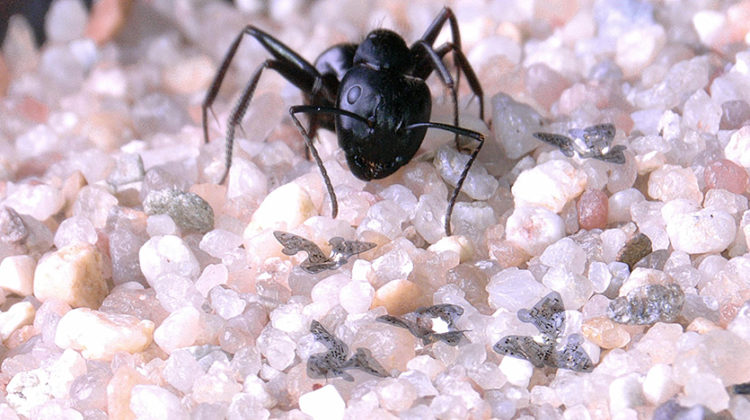
A team of engineers at Northwestern University in Evanston, Illinois, has created a flying microchip that’s roughly the same size as a grain of sand. The ‘microflier’ catches flight on the wind and then spins as it falls, much like the ‘propellor seeds’ of trees such as maples and sycamores.
These seeds provided the inspiration for the researchers, who studied their behaviour and used the results to optimise the microflier’s aerodynamics, utilising full-scale computational modelling of how the air flows around the device to ensure that it fell slowly and in a controlled manner. Such behaviour, the researchers suggest, would make the microfliers ideal for monitoring air pollution and airborne disease.
‘Our goal was to add winged flight to small-scale electronic systems, with the idea that these capabilities would allow us to distribute highly functional, miniaturised electronic devices to sense the environment for contamination monitoring, population surveillance or disease tracking,’ said Northwestern’s John A Rogers, who led the device’s development. ‘We were able to do that using ideas inspired by the biological world. Over the course of billions of years, nature has designed seeds with very sophisticated aerodynamics. We borrowed those design concepts, adapted them, and applied them to electronic circuit platforms.’
The resulting structures can be made in a wide variety of sizes and shapes. ‘We were able to build these structures at sizes much smaller than those found in nature,’ Rogers said. ‘That’s important because device miniaturisation represents the dominating development trajectory in the electronics industry, where sensors, radios, batteries and other components can be constructed in ever smaller dimensions.’
When it came to manufacturing the devices, Rogers’ team drew inspiration from children’s pop-up books. First, the team fabricated precursors to the flying structures in flat, planar geometries. These were then bonded to a slightly stretched rubber substrate. When the substrate relaxed, a controlled buckling process caused the wings to ‘pop up’ into precisely defined three-dimensional forms.
‘This strategy of building 3D structures from 2D precursors is powerful because all existing semiconductor devices are built in planar layouts,’ Rogers said. ‘We can thus exploit the most advanced materials and manufacturing methods used by the consumer-electronics industry to make completely standard, flat, chip-like designs. Then, we just transform them into 3D flying shapes by principles that are similar to those of a pop-up book.’
In a series of demonstrated examples, Rogers’ team added sensors, a power source that can harvest ambient energy, memory storage and an antenna that can wirelessly transfer data to a smart phone, tablet, or computer.
The devices are even biodegradable made from transient electronics that can harmlessly dissolve in water when they’re no longer needed. ‘We fabricate such physically transient electronics systems using degradable polymers, compostable conductors and dissolvable integrated circuit chips that naturally vanish into environmentally benign end products when exposed to water,’ Rogers said. ‘We recognize that recovery of large collections of microfliers might be difficult. To address this concern, these environmentally resorbable versions dissolve naturally and harmlessly.’
The research has been published in Nature.


